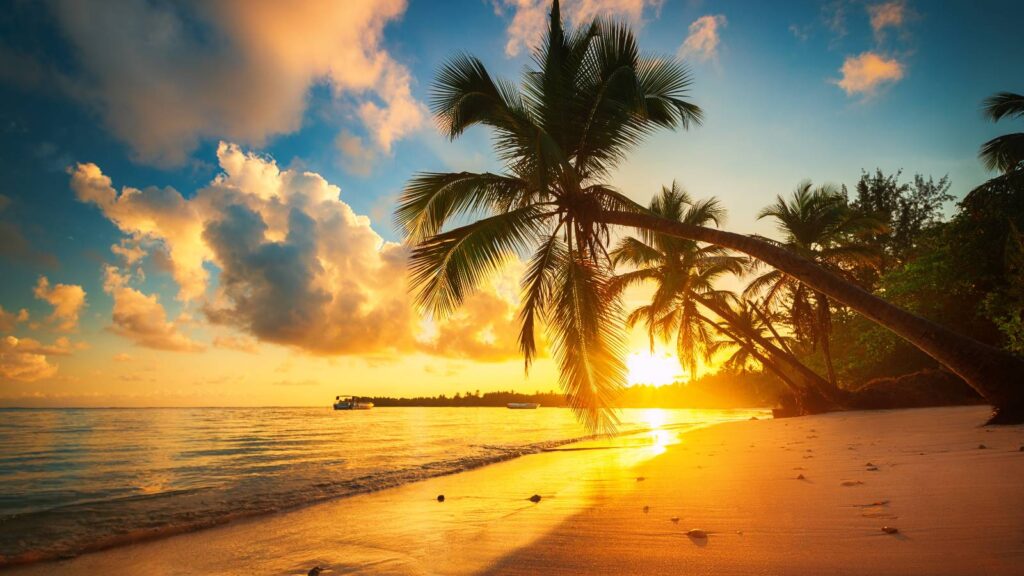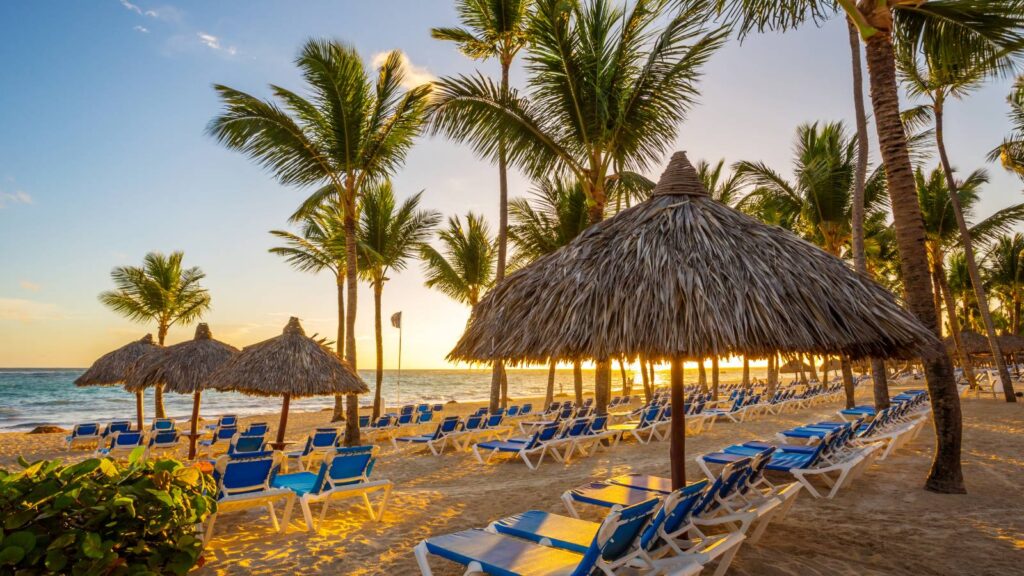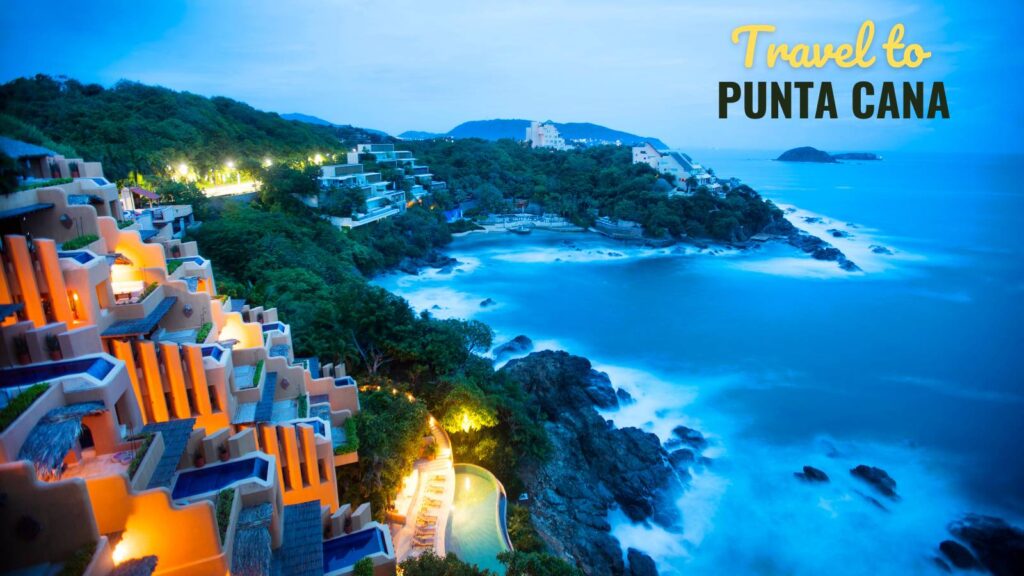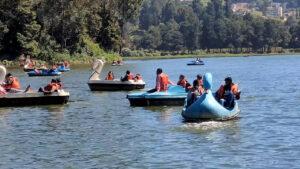Punta Cana, located on the eastern tip of the Dominican Republic, has long been a dream destination for beach lovers, honeymooners, and adventure seekers. Its appeal lies not just in its stunning beaches and all-inclusive resorts but also in the unique balance of sun, sand, and tropical experiences it offers.
Timing your visit is essential. Traveling during the wrong season can lead to unexpected rainfall, high costs, or overcrowded beaches, while planning strategically allows you to enjoy sunny skies, lower prices, and less crowded resorts.
Know the best time to travel to Punta Cana, analyzing weather patterns, cost variations, and crowd fluctuations to help you choose the perfect window for your dream vacation.
Punta Cana Weather Overview: What to Expect Year-Round

Punta Cana enjoys a tropical climate, which means it remains warm throughout the year, with average temperatures ranging from 77°F (25°C) to 88°F (31°C). Humidity levels are generally high, creating a lush, vibrant landscape ideal for nature lovers and photographers alike.
The dry season, stretching from December to April, offers sunny skies, low humidity, and minimal rainfall, making it ideal for long beach days, sailing excursions, or simply relaxing by the pool. The rainy season, from May to November, brings higher humidity and intermittent showers, though rain often comes in short bursts followed by sunshine.
It’s also the hurricane season, peaking between August and October, which can occasionally disrupt plans. Understanding these seasonal variations is essential for travelers seeking a combination of comfort, safety, and outdoor adventure.
Peak Season in Punta Cana (December – April): Sunshine & High Demand
From December through April, Punta Cana experiences its peak season, attracting tourists from across the globe. This period offers near-perfect weather, with sunny skies and refreshing ocean breezes that make outdoor activities such as snorkeling, scuba diving, and zip-lining highly enjoyable. Many visitors prefer this season for its predictable weather, which is rarely interrupted by rain.
Popularity of this season comes at a cost. Hotels and resorts often operate at full capacity, flights are more expensive, and popular excursions may require early reservations. High demand also means crowded beaches and long waits at restaurants and attractions.
Despite the high costs, this season is perfect for travelers who prioritize excellent weather, beach activities, and luxury experiences. Booking well in advance is strongly recommended to secure accommodations and tours.
Shoulder Seasons (May – June & November): The Sweet Spot for Balance
Shoulder seasons, including May–June and November, strike a balance between favorable weather and affordable travel. During these months, rainfall is generally light and sporadic, often occurring as a short afternoon shower followed by clear skies. The ocean remains warm and ideal for swimming, snorkeling, and other water activities.
Crowds are noticeably smaller compared to peak season, making it easier to enjoy beaches, restaurants, and excursions without feeling overwhelmed. Prices for flights and resorts are also more reasonable, providing excellent value for families, couples, and solo travelers.
The shoulder seasons are particularly appealing for travelers who want to experience Punta Cana’s natural beauty and vibrant culture without paying peak-season rates or dealing with massive tourist crowds.
Low Season (July – October): Budget-Friendly but Risky
The low season, from July to October, offers significant savings on accommodations and flights, making it a prime choice for budget-conscious travelers. Luxury resorts, all-inclusive packages, and excursions are often heavily discounted, giving visitors the chance to enjoy high-end experiences at reduced prices.
Yet, this period coincides with the Caribbean hurricane season. Heavy rains, high humidity, and occasional tropical storms are possible, which can limit outdoor activities. Travelers need to plan carefully, check weather updates, and consider travel insurance for added security.
For those willing to take the risk, the low season provides a unique opportunity to enjoy a quieter, more private vacation experience while saving money. Many resorts also offer additional perks like free upgrades or included excursions to attract guests during these months.
Best Time for Different Travelers
Choosing the best time to travel to Punta Cana depends heavily on your travel style and priorities:

Honeymooners and Couples: The dry season from December to April offers serene beaches, romantic sunsets, and luxury resorts perfect for couples seeking a memorable, stress-free vacation. Private beach dinners and sunset cruises are particularly enjoyable during this period.
Families with Kids: Shoulder seasons like May–June are ideal because they offer good weather with fewer crowds, allowing for family-friendly activities such as snorkeling, kid-friendly excursions, and poolside relaxation. Resort amenities for children are more accessible during this time.
Budget Travelers: Low season (July–October) delivers the most affordable options, from discounted flights to resort packages. Travelers can experience luxury at a fraction of the peak-season cost but should plan for potential weather interruptions.
Adventure Seekers and Water Sports Lovers: For activities like kiteboarding, paddleboarding, and deep-sea fishing, the shoulder or low seasons can offer excellent conditions, combined with smaller crowds and better deals on excursions.
Festivals & Events in Punta Cana That Influence Travel Timing
Punta Cana is not only a tropical escape but also a cultural hub. Events and festivals can enhance your vacation experience but may also affect travel logistics. The Dominican Carnival, typically in February, features vibrant parades, music, and dancing, attracting visitors from all over the Caribbean.
Music festivals, local beach parties, and cultural celebrations are scattered throughout the year, offering travelers unique experiences.
While attending these events can be memorable, they often lead to higher hotel prices and increased crowding. Travelers seeking peace and relaxation may want to avoid peak festival periods, whereas those looking for local culture and festive energy should plan their trips accordingly.
Understanding the local calendar helps travelers decide whether to time their visit for cultural immersion or quiet relaxation.
Month-by-Month Breakdown: When to Go & What to Expect
- January – March: Ideal for sun-seekers; expect sunny skies, moderate crowds, and high prices. Perfect for beach activities and outdoor adventures.
- April: Great weather continues; crowd levels drop slightly after spring break, making it a more peaceful time to visit.
- May – June: Shoulder season; lighter rain showers, fewer crowds, and reduced prices make this period attractive for families and budget travelers.
- July – September: Low season; hot, humid conditions with a risk of storms, but significant savings and quieter beaches.
- October – November: Transition to shoulder season; improving weather, fewer crowds, and excellent deals on hotels and flights.
- December: Peak season returns; sunny days, high prices, and crowded resorts. Ideal for travelers prioritizing weather and luxury experiences.
Insider Tips for Finding the Perfect Balance
To maximize your Punta Cana experience:
- Book Strategically: Early bookings for peak season or late bookings for shoulder/low season can secure the best deals.
- Flexibility Pays Off: Adjusting travel dates by even a few days can dramatically reduce costs.
- Monitor Weather: During low season, keep an eye on hurricane forecasts and adjust plans if necessary.
- Plan Activities Smartly: Schedule tours and excursions in the morning or late afternoon to avoid crowds and enjoy better lighting for photography.
- Explore Off-Resort Options: Local markets, cultural sites, and lesser-known beaches offer enriching experiences beyond resort walls.
By understanding seasonal patterns, costs, and crowd fluctuations, you can align your vacation with your personal preferences, ensuring a memorable, stress-free, and enjoyable experience in one of the Caribbean’s most beautiful destinations.
FAQs
1. What is the best time to travel to Punta Cana for perfect weather?
The ideal weather is during the dry season, from December to April, when sunny skies, low humidity, and calm ocean waters are most consistent.
2. When is the cheapest time to visit Punta Cana?
The low season, from July to October, offers the lowest prices on flights and resorts, though it coincides with the hurricane season and higher rainfall.
3. Which months are the least crowded in Punta Cana?
Shoulder seasons, such as May–June and November, have fewer tourists, making it easier to enjoy beaches, excursions, and resorts without large crowds.
4. Is Punta Cana safe to visit during hurricane season?
While it is possible to travel safely, hurricane season (August–October) comes with higher risks of storms and heavy rain. Travelers should monitor forecasts and consider travel insurance.
5. What is the peak tourist season in Punta Cana?
The peak season runs from December to April, coinciding with the dry season, winter holidays, and spring break, leading to higher prices and busier resorts.
6. Can I enjoy water sports year-round in Punta Cana?
Yes, most water sports are available year-round, but calm seas during the dry season make activities like snorkeling, diving, and sailing more enjoyable.
7. When is the best time for families to visit Punta Cana?
Shoulder seasons (May–June and November) are ideal for families, offering good weather, fewer crowds, and reasonable prices, making it easier to plan kid-friendly activities.
8. Are there festivals or events that affect travel timing?
Yes, events like the Dominican Carnival in February and local music festivals attract visitors and increase crowds and accommodation costs. Planning around these can help avoid peak crowds.
9. How should budget travelers plan their trip to Punta Cana?
Budget travelers should consider the low season for the best deals on flights and resorts, but they must remain flexible and prepared for occasional rain or storms.
10. Can the “best time” to visit vary based on travel goals?
Absolutely. Honeymooners may prioritize weather and choose peak season, families may prefer shoulder seasons, and budget travelers may opt for low season, balancing cost, weather, and crowds.






